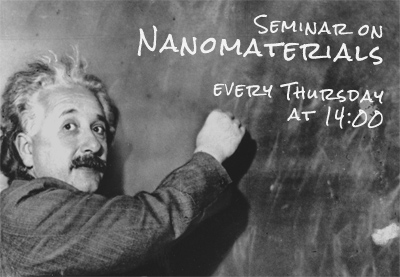Nanoseminar
Group of Structure analysis at the Department of Condensed Matter Physics
of Charles University and MGML has a pleasure to invite you to attend the seminar on nanomaterials: Physics, Technology, Applications
on 20th April 2023 at 14:00
at Faculty of Mathematics and Physics of Charles University, Ke Karlovu 5, 121 16 Praha 2
Lecture room F2
Adrien Chauvin
University of Mons, Belgium
Development of hybrid photo-thermal virucidal surfaces
Adrien Chauvin » Development of hybrid photo-thermal virucidal surfaces
University of Mons, Belgium
Location: F2
Surfaces represent an important indirect mode of transmission for viruses including SARS-CoV2 [1]. The concept behind this work is based on the combined utilization of sunlight to (i) increase the temperature of the coated surface and (ii) activate a photocatalytic top-layer in order to quickly inactivate viruses, avoiding therefore an important contamination route. The complete coating consists of a full plasma-based multilayer material made of a solar absorber covered by a photocatalytic coating.
For the photocatalytic layer, titanium dioxide (TiO2) has been deposited by dielectric barrier discharge at atmospheric pressure [2]. This technique allows for the deposition of porous TiO2 which leads to an increase of the surface in contact with the viruses compared to dense films. By tuning the deposition parameters and the doping content, one can increase the amount of light used for photocatalysis by modifying the bandgap. In this work, the lowest bandgap has been reached at 3.22 eV. For the solar absorber layer, a cermet structure made of silver nanoparticles embedded in an alumina matrix has been selected [3]. The synthesis of this layer has been done by reactive magnetron sputtering. The tuning of the parameters allows for reaching the highest solar absorbance (α = 0.92) which leads to an increase of the temperature of the surface of 9K after 30 min irradiation under 1 sun illumination. Following the optimization of each layer, the virucidal test against hCov229E and SARS-CoV2 has been carried out, first, on the pristine TiO2 layer and, then, on the multilayer structure.
*Corresponding author: e-mail: adrien.chauvin@umons.ac.be
References
[1] Kampf et al., J. Hosp. Infect., 104, (2020), 246.
[2] Chen et al., Thin Solid Films, 664, (2018), 90.
[3] Barshilia et al., Sol. Energy Mater. Sol. Cells, 95, (2011), 1707.


